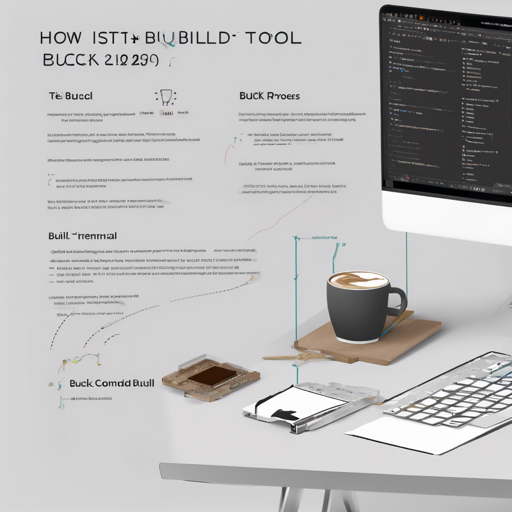Welcome to this guide on how to install and use Buck, a powerful build tool designed to optimize your development process. Though the original Buck system is effectively dead, we will walk through the basics of using it and its replacement, Buck2. Buck is known for its efficiency in building large codebases, and understanding it can be a big asset in your software development journey.
Installation Steps
The installation of Buck involves a two-phase bootstrapping process. Remember, you’ll need Java 8 or 11 for the compilation process.
Phase 1: Clone and Bootstrap
- First, you need to clone the Buck repository:
git clone --depth 1 https://github.com/facebook/buck.gitcd buckantMake sure your JAVA_HOME environment variable points to the correct Java version to avoid compilation errors.
Phase 2: Build Buck with Bootstrapped Version
- Now that you have bootstrapped Buck, you can build it using:
./bin/buck build --show-output buck# programs:buck buck-out/gen/programs/buck.pexbuck-out/gen/programs/buck.pex --helpUsing Prebuilt Buck Binaries
If you prefer not to build Buck from source, you can download pre-built binaries directly:
- You can find binaries for any Buck SHA at jitpack.io.
- To fetch binaries specifically built for JDK 11, ensure you modify the URL to this format: jitpack.io/com/github/facebook/buck/shabuck-sha-java11.pex.
Understanding Feature Deprecation in Buck
The Buck team understands that keeping features up-to-date is essential. They have a process for deprecating features gracefully:
- When a feature is to be deprecated, an issue is created on GitHub detailing the change.
- Configuration flags are used to toggle the new and old behaviors until they transition fully.
- A removal date is established once a feature is deprecated, ensuring developers are well-informed.
Troubleshooting
If you encounter issues during installation:
- Ensure your Java version matches what Buck requires (Java 8 or 11).
- Double-check that your JAVA_HOME environment variable is correctly set.
- If you experience issues with ant, consider running it with increased verbosity to catch hidden errors.
For more insights, updates, or to collaborate on AI development projects, stay connected with fxis.ai.
Conclusion
At fxis.ai, we believe that such advancements are crucial for the future of AI, as they enable more comprehensive and effective solutions. Our team is continually exploring new methodologies to push the envelope in artificial intelligence, ensuring that our clients benefit from the latest technological innovations.

